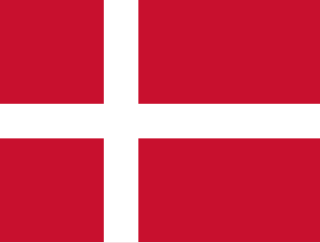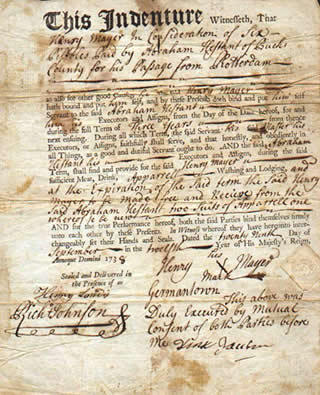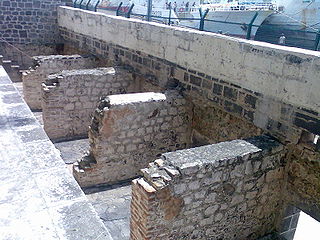Related Research Articles

The United States Virgin Islands, officially the Virgin Islands of the United States, are a group of Caribbean islands and an unincorporated and organized territory of the United States. The islands are geographically part of the Virgin Islands archipelago and are located in the Leeward Islands of the Lesser Antilles.

The Danish West Indies or Danish Virgin Islands or Danish Antilles were a Danish colony in the Caribbean, consisting of the islands of Saint Thomas with 32 square miles (83 km2); Saint John with 19 square miles (49 km2); and Saint Croix with 84 square miles (220 km2). The islands have belonged to the United States as the Virgin Islands since they were purchased in 1917. Water Island was part of the Danish West Indies until 1905, when the Danish state sold it to the East Asiatic Company, a private shipping company.
Saint Croix is an island in the Caribbean Sea, and a county and constituent district of the United States Virgin Islands (USVI), an unincorporated territory of the United States.

Indentured servitude is a form of labor in which a person is contracted to work without salary for a specific number of years. The contract, called an "indenture", may be entered voluntarily for purported eventual compensation or debt repayment, or imposed involuntarily as a judicial punishment. Many came with forged or no contract they ever saw.

Coolie is a pejorative term used for low-wage labourers, typically those of Indian or Chinese descent.

Danish overseas colonies and Dano-Norwegian colonies were the colonies that Denmark–Norway possessed from 1536 until 1953. At its apex, the colonies spanned four continents: Africa, Asia, Europe, and North America.
Indo-Caribbeans or Indian-Caribbeans are people in the Caribbean who are descendants of the Jahaji indentured laborers from India and the wider subcontinent, who were brought by the British, Dutch, and French during the colonial era from the mid-19th century to the early 20th century. A minority of them are descendants from people who immigrated as entrepreneurs, businesspeople, merchants, engineers, doctors, religious leaders and other professional occupations beginning in the mid-20th century.
Indo-Guyanese or Indian-Guyanese, are Guyanese nationals of Indian origin who trace their ancestry to India and the wider subcontinent. They are the descendants of indentured servants and settlers who migrated from India beginning in 1838, and continuing during the British Raj.

The United States Virgin Islands, often abbreviated USVI, are a group of islands and cays located in the Lesser Antilles of the Eastern Caribbean, consisting of three main islands and fifty smaller islets and cays. Like many of their Caribbean neighbors, the history of the islands is characterized by native Amerindian settlement, European colonization, and the Atlantic slave trade.

The Immigration Depot is a building complex located in Port Louis on the Indian Ocean island of Mauritius, the first British colony to receive indentured, or contracted, labour workforce from many countries. From 1849 to 1923, half a million Indian indentured labourers passed through the Immigration Depot, to be transported to plantations throughout the British Empire. The large-scale migration of the labourers left an indelible mark on the societies of many former British colonies, with Indians constituting a substantial proportion of their national populations. In Mauritius alone, 68 percent of the current total population is of Indian ancestry. The Immigration Depot has thus become an important reference point in the history and cultural identity of Mauritius.
The Indian indenture system was a system of indentured servitude, by which more than 1.6 million workers from British India were transported to labour in European colonies, as a substitute for slave labor, following the abolition of the trade in the early 19th century. The system expanded after the abolition of slavery in the British Empire in 1833, in the French colonies in 1848, and in the Dutch Empire in 1863. British Indian indentureship lasted till the 1920s. This resulted in the development of a large South Asian diaspora in the Caribbean, Natal, East Africa, Réunion, Mauritius, Sri Lanka, Malaysia, Myanmar, and Fiji, as well as the growth of Indo-Caribbean, Indo-African, Indo-Mauritian, Indo-Fijian, Indo-Malaysian, and Indo-Singaporean populations.
Indo-Grenadians or Grenadians, who trace their roots to India, form the largest minority group in Grenada. This term is not generally recognized by Grenadians or indeed Caribbeans. They usually refer to themselves simply as Grenadian or possibly Caribbean. This group was first introduced during the second half of the 19th century when Grenada experimented with indentured labour. By the second half of the 20th century Indians were so integrated into Grenada’s society that a distinct Indian cultural identity was generally invisible. In addition, Indians were involved in every aspect of Grenadian life. Currently there are over 12,000 Grenadians of Indian and mixed-Indian descent.

Sugar production in the United States Virgin Islands was an important part of the economy of the United States Virgin Islands for over two hundred years. Long before the islands became part of the United States in 1917, the islands, in particular the island of Saint Croix, was exploited by the Danish from the early 18th century and by 1800 over 30,000 acres were under cultivation, earning Saint Croix a reputation as the "Garden of the West Indies". Since the closing of the last sugar factory on Saint Croix in 1966, the industry has become only a memory.

The 1878 St. Croix labor riot, locally also known as Fireburn, was a labor riot on Saint Croix, one of the Virgin Islands, then part of the Danish West Indies. The revolt started on October 1, 1878, and was suppressed after several days of looting and burning. Among the leaders were several women—"Queen Mary" Thomas, "Queen Agnes" Salomon, and "Queen Mathilda" McBean—who became known as "Queens of the Fireburn".
Religion in the United States Virgin Islands is varied, though most U.S. Virgin Islanders are Christian. The U.S. Virgin Islands has a history of Judaism and Christianity, with Jews first settling on the islands in 1655. It is estimated that only 5-6% of the population is non-Christian.
Indo-Vincentians are an ethnic group in Saint Vincent and the Grenadines who are mainly descendants of indentured laborers who came in the late 19th century to the early 20th century and entrepreneurs who began immigrating in the mid-20th century from the Indian subcontinent. There are about 5,900 people of Indian origin living in the country.
Indo–Saint Lucians or Indian–Saint Lucians, are Saint Lucians whose ancestry lies within the country of India, primarily from Bhojpur and Awadh regions that are in the modern-day Indian states of Bihar, Jharkhand and Uttar Pradesh in Northern India. In 1859, the British began transporting indentured workers from British India to work on plantation estates in Saint Lucia, which had become a British colony in 1814. The first ship carrying 318 indentured workers from India, the Palmyra, arrived in Saint Lucia on 6 May 1859, and the last ship carrying Indian indentured workers, the Volga, arrived on 10 December 1893.

Indentured servitude in British America was the prominent system of labor in the British American colonies until it was eventually supplanted by slavery. During its time, the system was so prominent that more than half of all immigrants to British colonies south of New England were white servants, and that nearly half of total white immigration to the Thirteen Colonies came under indenture. By the beginning of the American Revolutionary War in 1775, only 2 to 3 percent of the colonial labor force was composed of indentured servants.

India–Saint Kitts and Nevis relations refers to the international relations that exist between India and Saint Kitts and Nevis. The High Commission of India in Georgetown, Guyana is concurrently accredited to Saint Kitts and Nevis. India opened its Honorary Consulate in Basseterre in August 2008.
The Indian community in Saint Kitts and Nevis is made up of Indo-Kittitians, Indo-Nevisians, non-resident Indians and persons of Indian origin. Indo-Kittitians and Indo-Nevisians are nationals of Saint Kitts and Nevis whose ancestry lies within the country of India. The community originated from the Indian indentured workers brought to Saint Kitts and Nevis by the British in 1861 and 1874 respectively. By 1884, most of the community had emigrated to Caribbean nations with larger Indian populations such as Trinidad and Tobago, Guyana and Suriname.
References
- 1 2 3 4 5 6 7 8 9 10 11 Roopnarine, Lomarsh (2012). "A COMPARATIVE ANALYSIS OF TWO FAILED INDENTURE EXPERIENCES IN POST-EMANCIPATION CARIBBEAN : BRITISH GUIANA (1838- 1843) AND D ANISH ST . C ROIX (1863– 1868)" (PDF). Iberoamericana. Nordic Journal of Latin American and Caribbean Studies. XLII : 1- 2 2012: 203–230. Retrieved 27 April 2017.
- ↑ "Indo-Caribbean Genealogy" (PDF). University of Western Cape. Retrieved 28 April 2017.[ permanent dead link ]
- 1 2 Hassankhan, Maurits S.; Roopnarine, Lomarsh; Ramsoedh, Hans (10 November 2016). "3". The Legacy of Indian Indenture: Historical and Contemporary Aspects of Migration and Diaspora. Routledge. ISBN 9781351986830 . Retrieved 27 April 2017.
- ↑ Hardeen, Devi (1 July 2012). "The Brown Atlantic: Re-thinking Post-Slavery" (PDF). University of Liverpool. p. 11. Retrieved 27 April 2017.
- 1 2 3 Roopnarine, Lomarsh (2014). "East Indians in the United States Virgin Islands". ProQuest. Kingston: Social and Economic Studies. Retrieved 27 April 2017.
- ↑ Kalunta-Crumpton, Anita (3 March 2016). Pan-African Issues in Drugs and Drug Control: An International Perspective. Routledge. p. 227. ISBN 9781317084341 . Retrieved 27 April 2017.